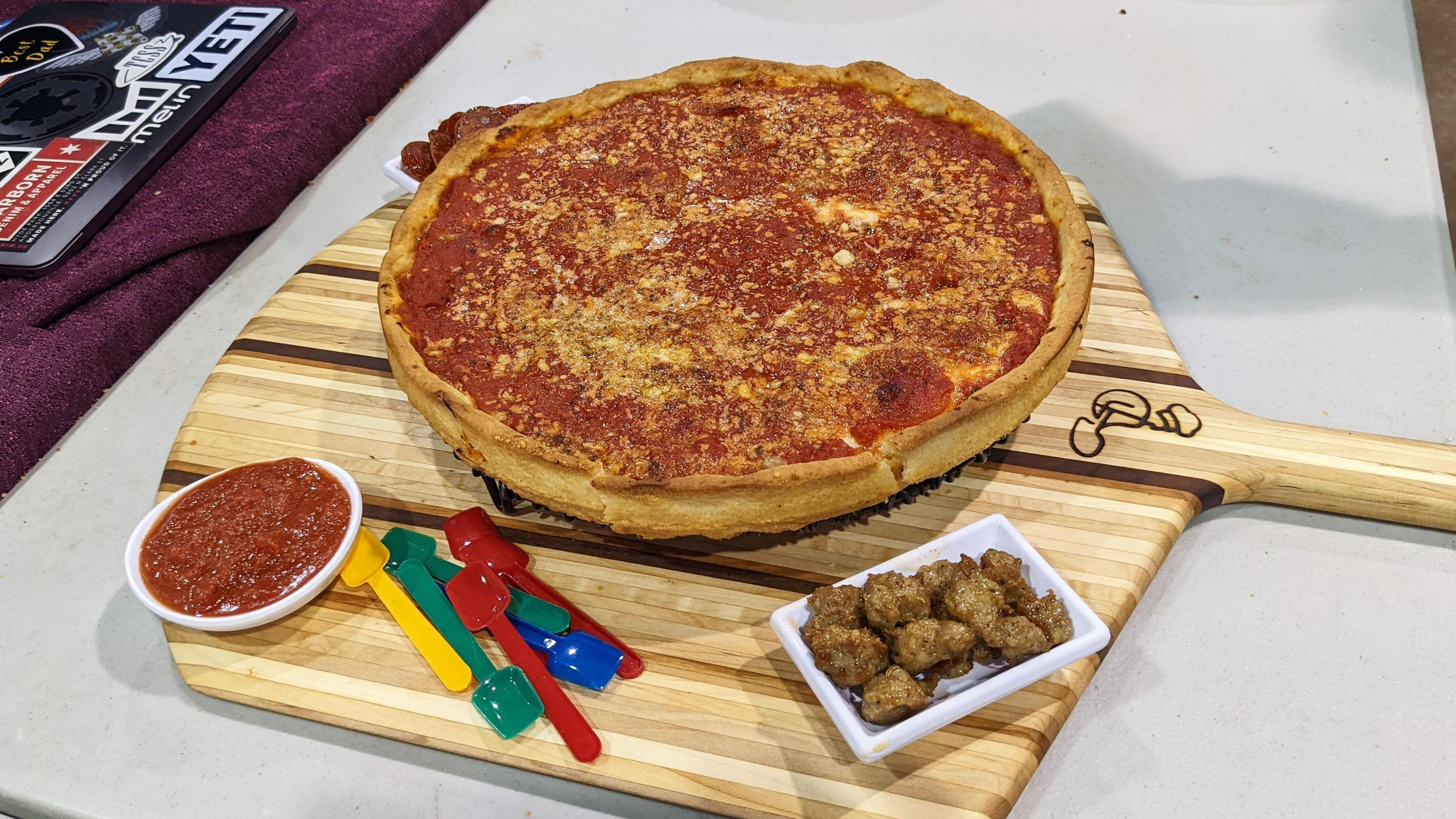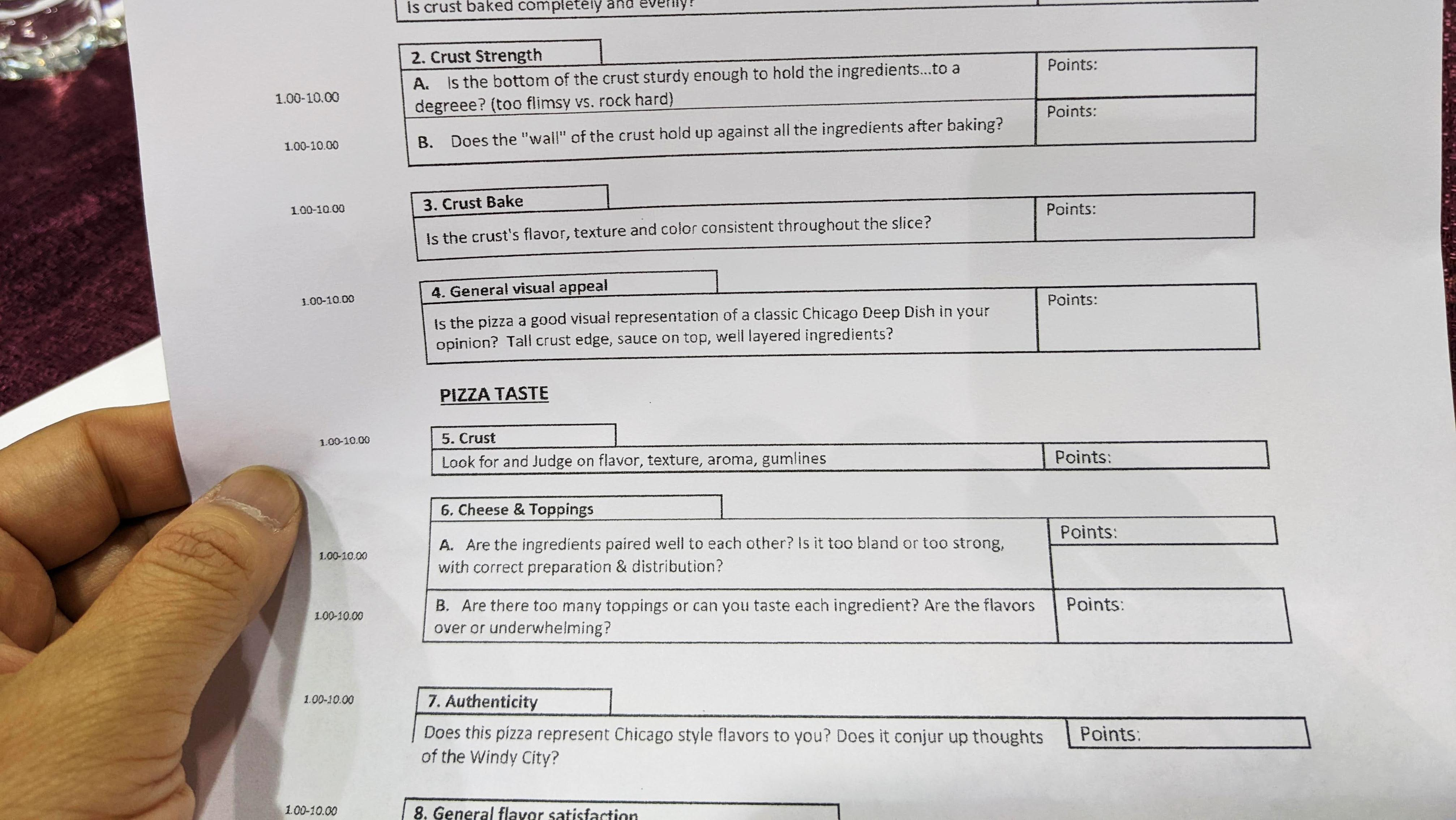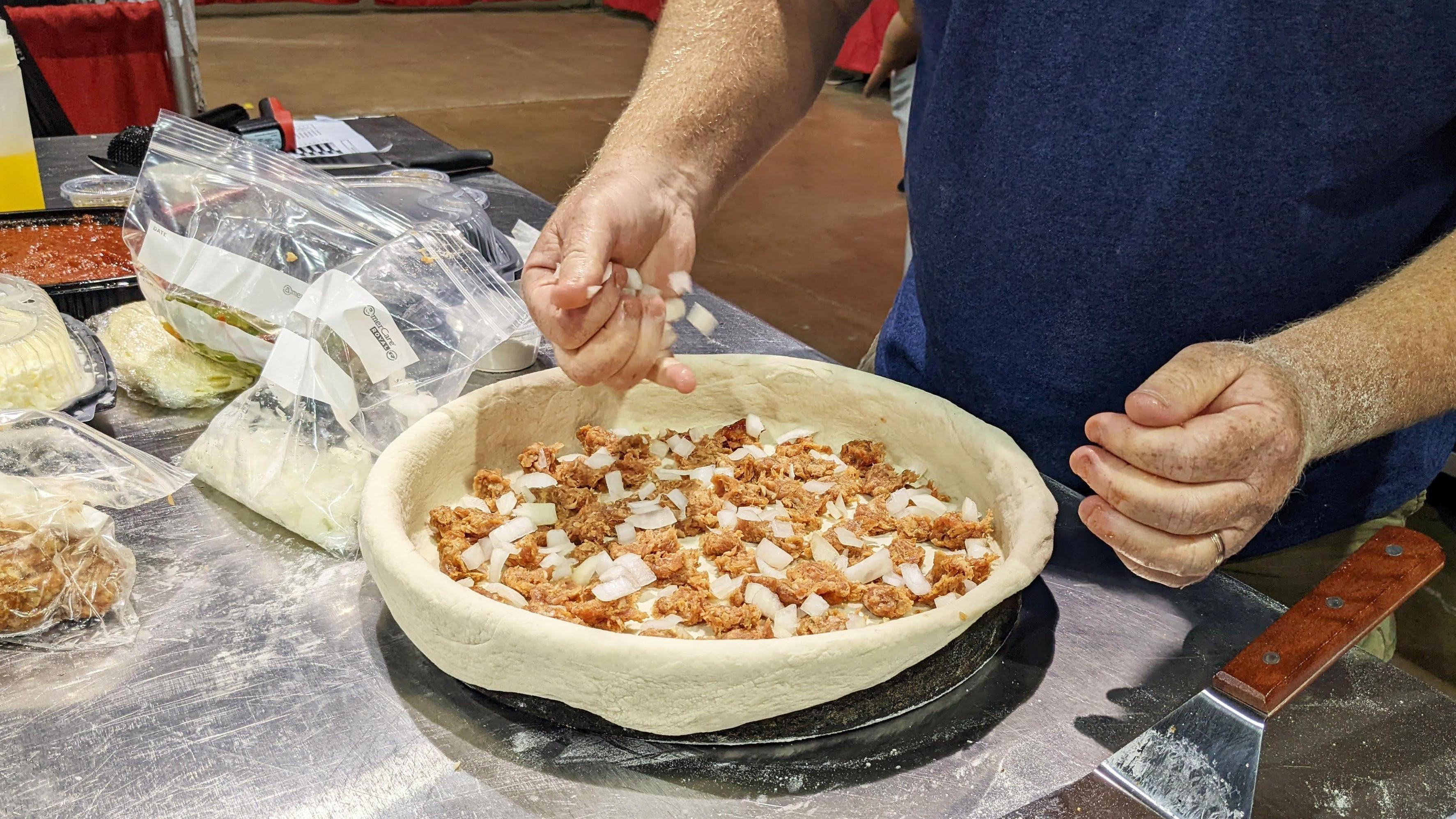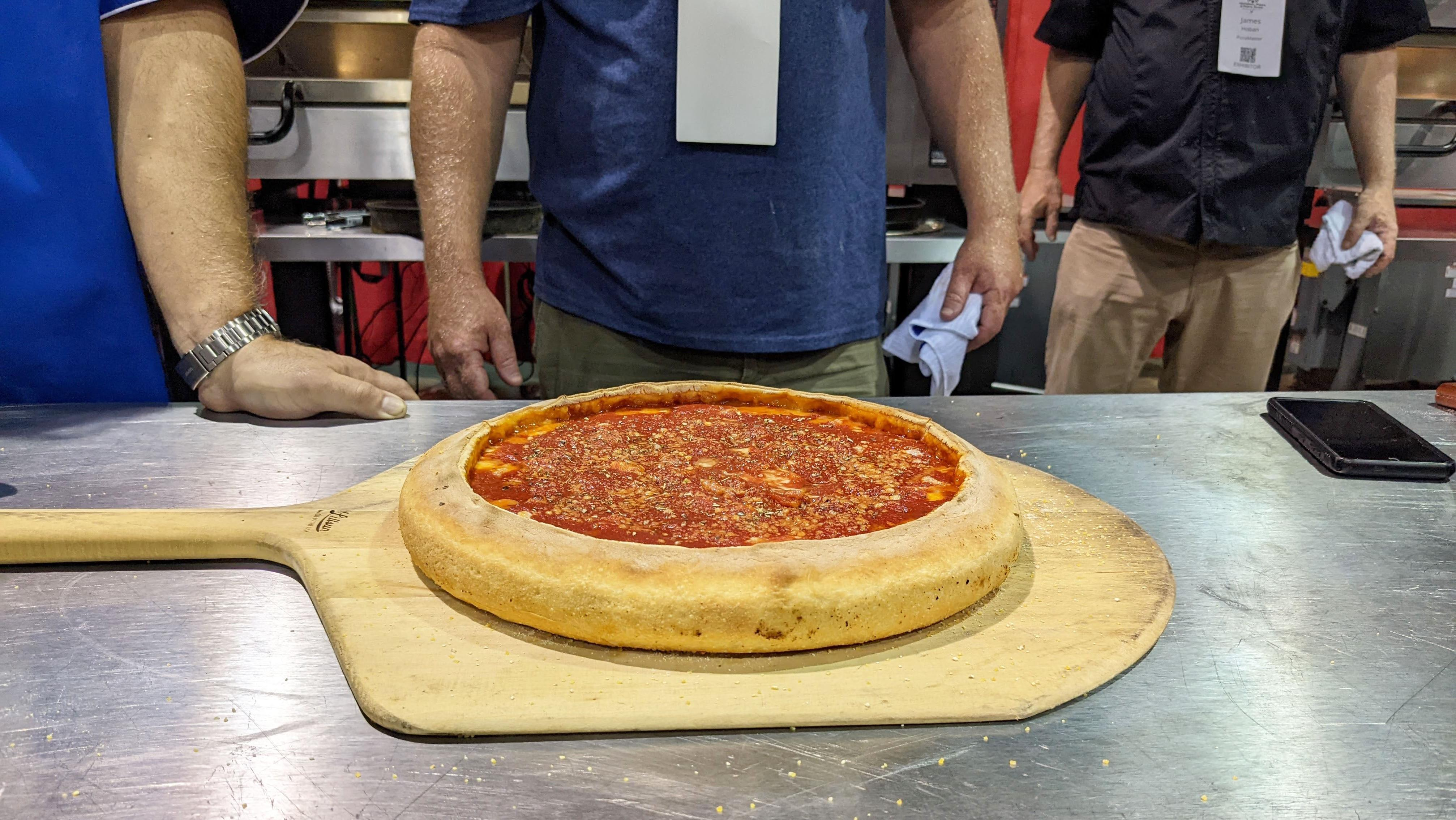How I Survived Judging A Deep Dish Pizza Contest
Eating all this pizza is as fun and as difficult as you imagine.
When you're a food writer, a world of interesting opportunities opens up to you. One is the invitation to judge cooking competitions. I've previously been a judge at an amateur mac and cheese competition, a dumpling competition, a ramen competition (featuring no fewer than 20 competitors), and Baconfest, plus many more. No Iron Chef yet, but I'm sure it's just a matter of time.
Last week, I was asked to help judge a deep dish pizza competition at the 2022 National Pizza & Pasta Show, a trade show and convention for the pizza, pasta, and Italian foods industry put on by PMQ Pizza Magazine in Chicago. I've documented the experience to show you what goes on in a judge's mind and body—well, mine, at least—while trying to rank an onslaught of impressive food.
Preparing for the competition
"Oh wow, I wish I had your job!" That's what everyone says when you tell them what you're about to do. On paper, judging a food festival or a competition sounds wonderful. Fifteen types of fried chicken? Sign me up!
Say those words to yourself out loud. "Fifteen types of fried chicken." Say them over and over again. Maybe then you'll understand the gravity of the situation. Think about how many pieces of fried chicken you normally eat in one sitting. It's probably not 15.
In the case of the National Pizza & Pasta Show, there were nine different deep dish pizzas to taste, each made by competitors who were mostly from the Chicagoland area (with the notable exception of a competitor from South Dakota). Nine might sound like a manageable amount of dishes to try, but in this case, I'd be plowing down deep dish pizza, which, as you know, is heavy as shit. (That's why Chicagoans typically don't eat it very often.)
Understanding the judging criteria
Before we started the day at 10 a.m., I was handed a judging guide that gave me guidelines on how to score each competitor. This worksheet was a godsend, because it went into specifics like crust quality, balance of toppings, visual appeal, and other categories. We'd be scoring each pizza on a scale of 10 points, with decimals allowed.
Other competitions vary quite a bit; sometimes you're completely left to your own devices with a blank sheet of paper, or you might have a worksheet that lays out some vague parameters. This was easily the best judging sheet I've ever received due to its attention to detail. We were also given a sheet detailing the bake temperatures each competitor was using in the oven, in case we wanted to scrutinize even further. When it comes to pizza, every variable matters.
My fellow judges were other pizzamakers, including Derrick Tung of Paulie Gee's Logan Square (whom we've featured previously on The Takeout); Jonathan Porter, who runs Chicago Pizza Tours; and pizza super-enthusiast Brian Erst. Other judges included pros from parts of the industry, like oven manufacturers and ingredient suppliers.
Watching the experts work
Our tastings were staggered: Each competitor was given a time slot and a time limit so that we'd be able to try each pie at its best, which is straight from the oven.
The judges were allowed to watch the pizza-making process up close, from stretching to topping to baking, and we could also query every pizzamaker on their process, if we were curious. Other than encouraging each pizzamaker when I could, I opted to stay fairly out of the way since I was afraid hovering around them would stress them out.
Once each pizza was out of the oven, we gave it a visual inspection, and each competitor briefly introduced their pies to the judging panel. All nine pizzas were remarkably unique from each other, with stylish flourishes that went across the board. Some had caramelized cheese edges like a Detroit-style pizza, while others opted for the classic deep dish format of a doughy, thick-walled crust.
There were so many points upon which to evaluate each pizza, including the flavors of the crust (some buttery, some neutral), the balance of toppings, and the notes in the sauce (some tasted like the tomatoes were fresh off the vine).

Saving stomach space for it all
Many bystanders wanted to know whether we judges ate the entire slice during the evaluation process. The answer is no. I hate wasting food, but I can't eat nine large slices of deep dish pizza, let alone any other style! (I can do two deep dish slices, max, in one sitting.) Every judge took small, deliberate bites of each slice and tore off pieces of the edge to get a gauge of the crust's characteristics.
I took repeat bites when there was some criterion I missed, like if I hadn't paid close enough attention to the balance of toppings in the previous bite. And sometimes, I just loved what I was eating, so I naturally wanted more. After the third sample, I realized I had to pace myself (fuck, it was early!), because I was starting to get mildly sweaty from all that cheese, salt, meat, and crust. (Only one of the nine pizzas was veggie.)
Palate fatigue is a real thing, and if you start to feel like shit toward the end, which I inevitably did, it becomes a little more difficult to judge a pizza fairly. That's why a detailed judging worksheet comes in handy, because it keeps you laser-focused and as objective as possible.
The winning pizza was from Panino's Pizza, a three-restaurant chain here in Chicago and its surrounding suburbs. It was, in my opinion, a pitch-perfect rendition of Chicago's deep dish style: flavorful crust, well-seasoned sauce, and hearty yet balanced toppings. It was also the very last pizza of the session, which meant that the palate fatigue didn't curse any of us in the end. Panino's pizzamaker Lenny Rago ended up winning the thin crust competition as well, which was later in the day, and received a trip to Italy to compete in a world pizza competition.
Judging food competitions can be a slog. But it's also an utter delight, as long as you know how to pace yourself. It's not often you get to sample nine different versions of any dish in one sitting, and each of these samples came from very talented chefs. Despite feeling mildly like shit for a few hours following the trade show, I found myself craving more pizza the next day. I think they picked the right person for the job.



